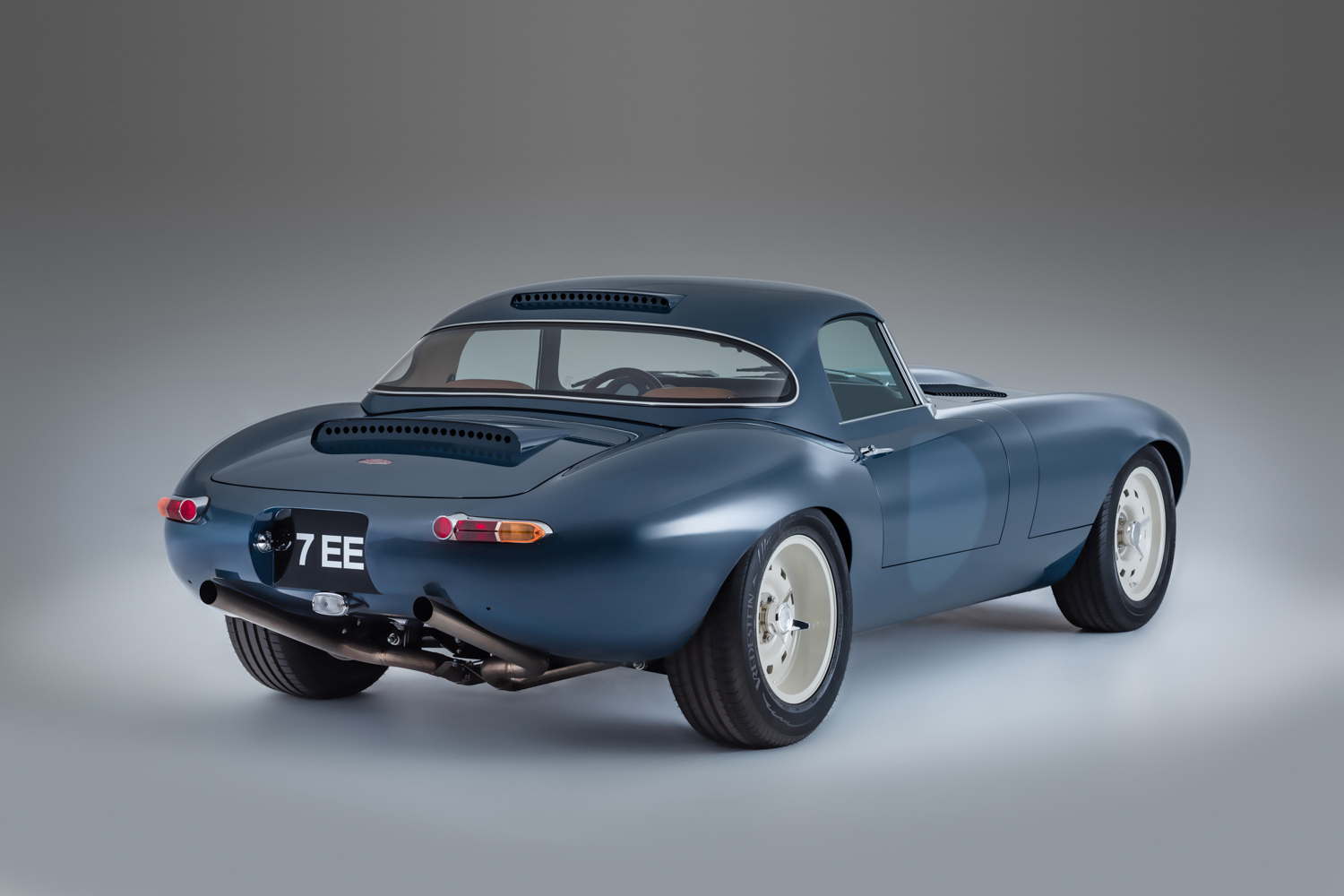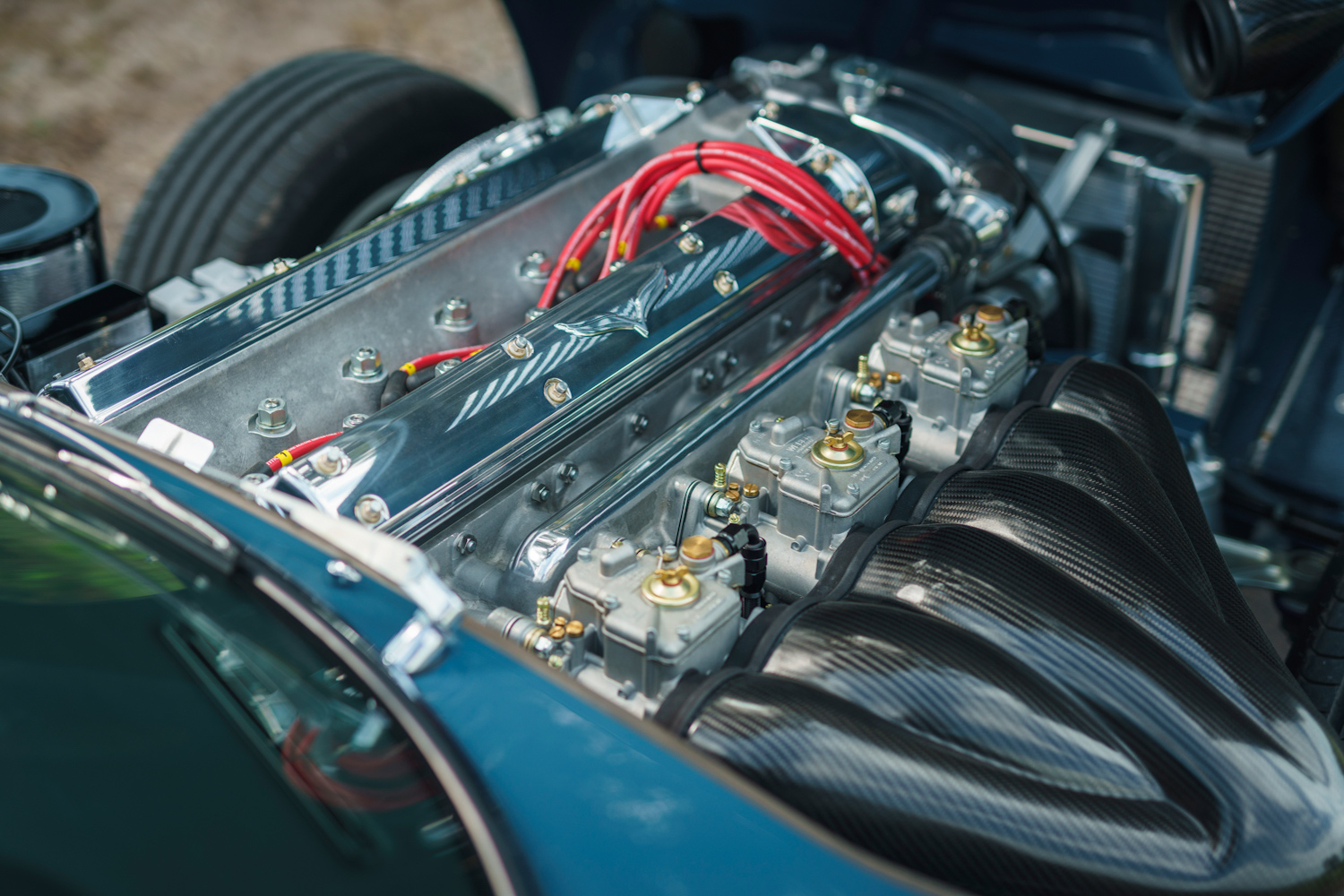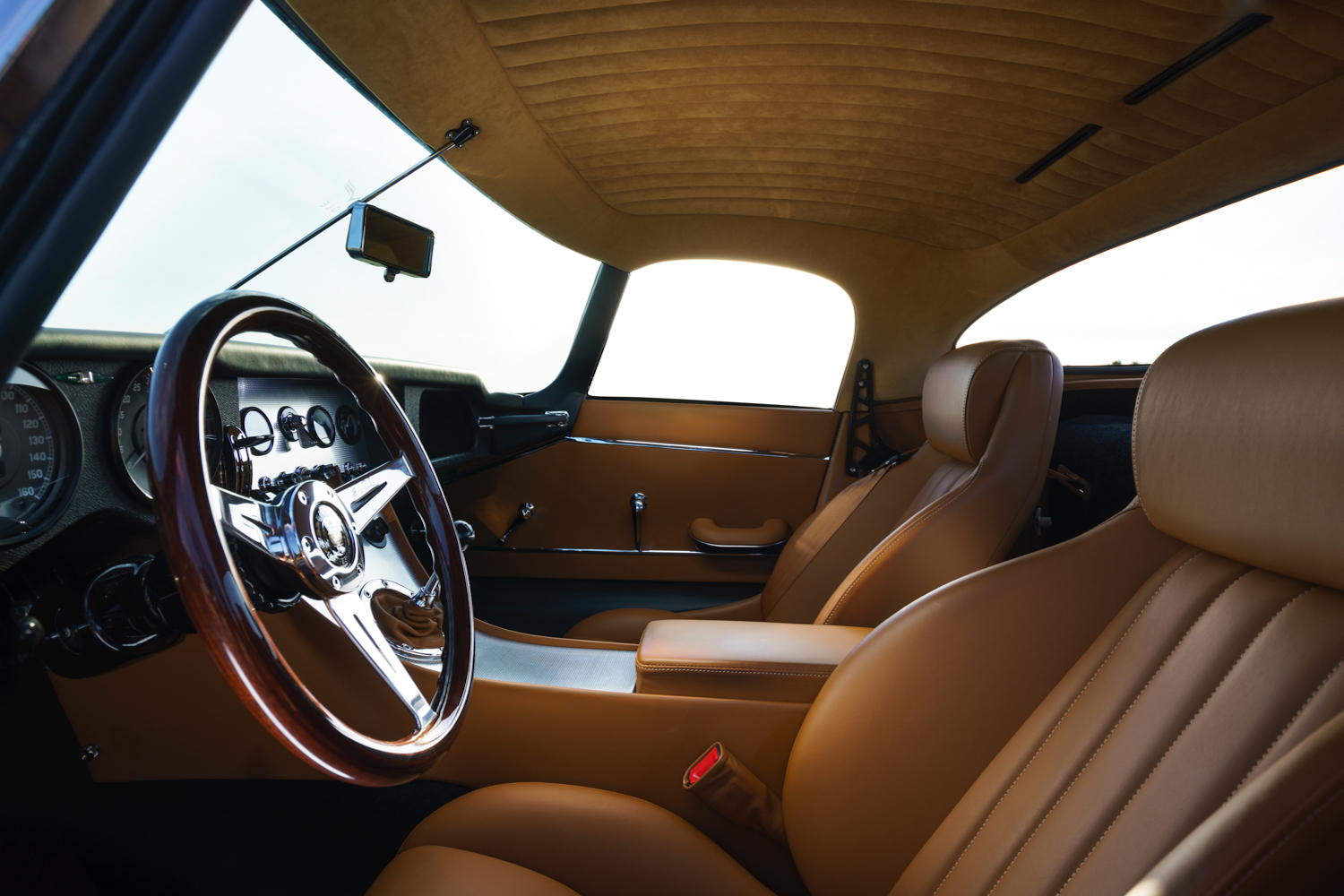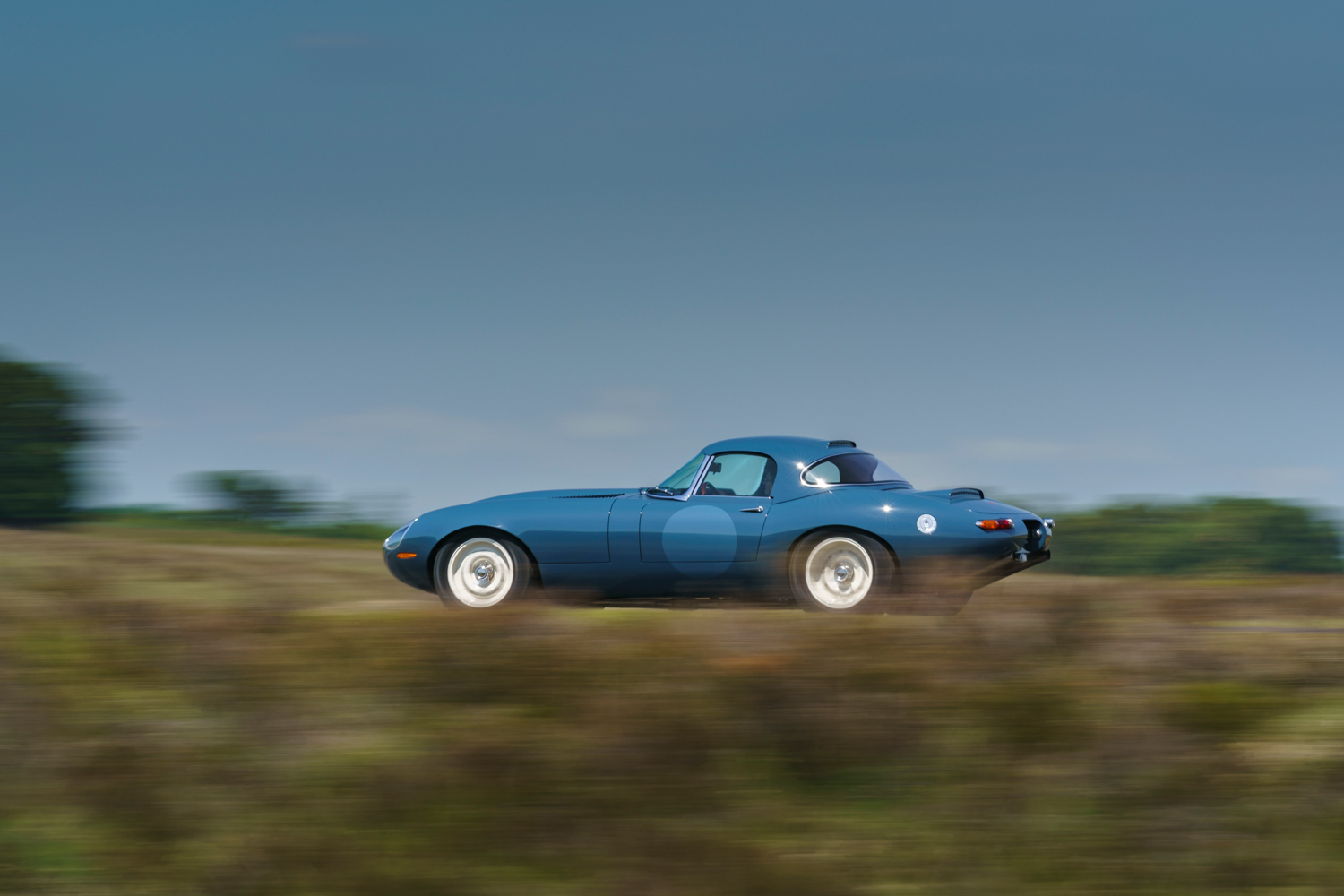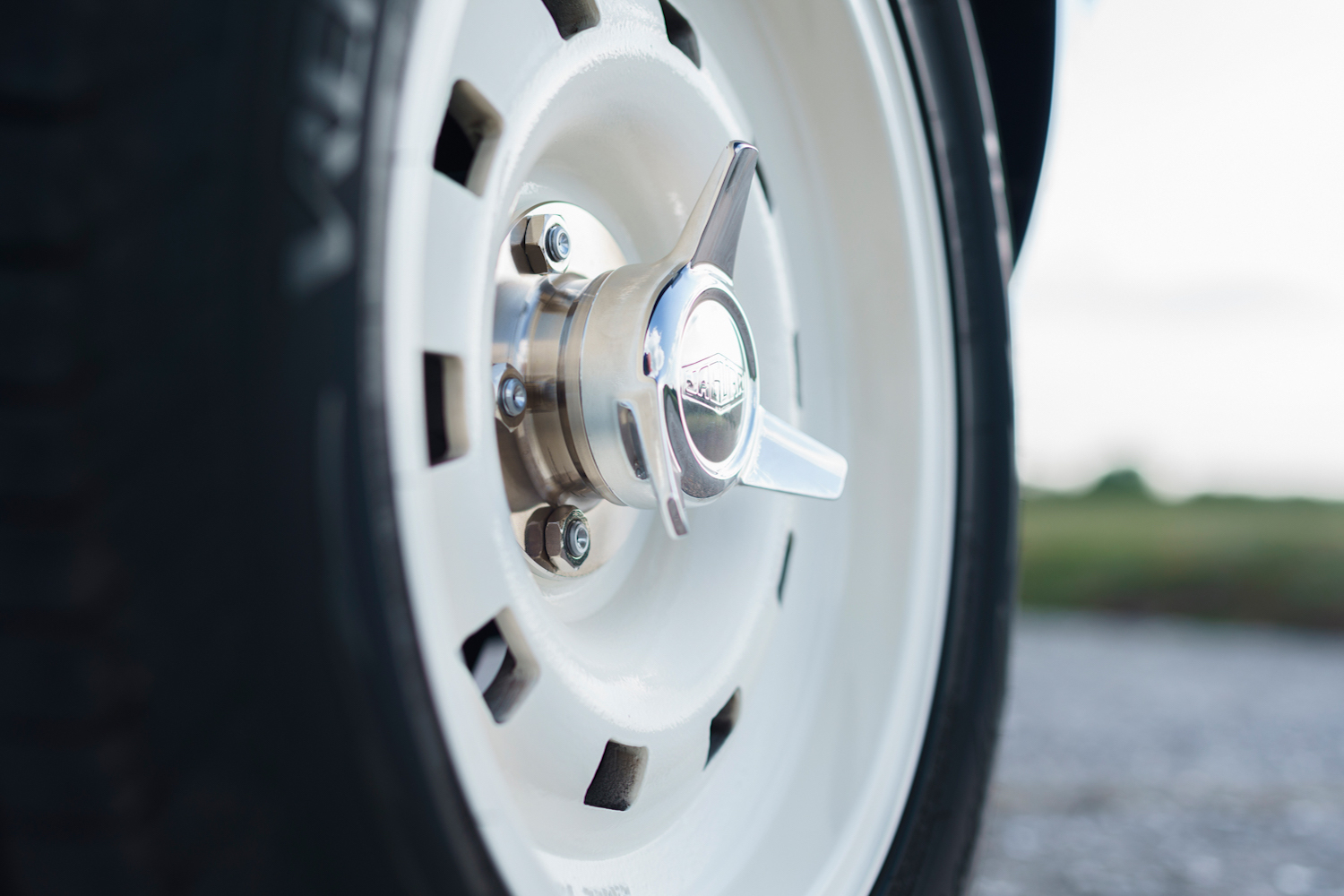The Jaguar E-Type has, rightly, been considered a motoring icon ever since it was first launched in 1961. In the almost 60 years since then, it's become an enduring classic, and the target of various modifications and upgrades. Eagle, a UK-based company famed for its work with E-Types, reckons that the E has reached its apogee with this - the Eagle Lightweight GT.
Lightweight E-Type race cars
The original Lightweight E-Type was, of course, a racing car not a road car, but Eagle has now spent 8,000 man-hours taking all that racing brilliance and honing it for road use. Only 12 Lightweight Es were originally built, all in 1963. Eagle used these cars as the starting point for the Lightweight GT.
"An Eagle E-Type is always an ultimate development of the model, with each variation created for a different type of driver," explains Eagle founder Henry Pearman. "Three years ago, a customer asked us to create Eagle's vision of Jaguar's ultimate E-Type, the Lightweight. The result of that project is the Eagle Lightweight GT, rigorously developed and proven and now ready for further builds."
Pearman says that this Lightweight GT was a bigger challenge than previous re-engineered E-Types on which Eagle has worked. "The factory Lightweight was a stripped-out racer. We wanted to retain that special feel of a 60s competition car from an incredible era in British motorsport, but with the comfort, refinement and reliability that would make it an exhilarating daily driver or long-distance GT."
4.7-litre, straight-six XK engine
To build a Lightweight GT, Eagle takes an original Series 1 E-Type and strips it down to the chassis. Every panel is replaced with new, featherweight aluminium items, albeit of a thicker gauge than the original racing cars used. They're specially crafted, taking 2,500 hours for each body, and are fitted to manufacturing-grade tolerances, rather than the suck-it-and-see approach of the original racers.
While the looks are all original, Eagle has made some subtle alterations to the original design. Those include deeper sills, which stiffen the body and also allow the driver to sit lower, improving comfort and headroom. The windscreen is also a little more raked, and the wheelarches are slightly bigger to allow for 16-inch peg-drive magnesium alloy wheels.
Up front lies the mighty 4.7-litre straight-six engine, Eagle's ultimate development of the original Jaguar XK unit. As with the original racers, this engine gets an aluminium block, and bespoke pistons, conrods, and crankshaft. There's also a wide-angle head, which means larger valves and a higher-lift camshaft.
The upshot? 380hp, with a whopping 508Nm of torque at 4,000rpm.
Bespoke components, and 3D printing
Other items are just as bespoke, such as a new five-speed manual gearbox, that uses yet more lightweight magnesium pieces. Eagle says that "carefully selected modern systems that have been discreetly integrated." That includes, thankfully, the brakes, which uses four piston, servo assisted vented discs. There's a subtly integrated electrical distribution panel which means no more firey afternoons on hard shoulders, and the extreme cabin heat of the original is solved by modern thermal barrier materials and the careful integration of a discreet air-conditioning system - bespoke designed for the car.
Eagle is using a mixture of traditional (hand-formed aluminium panels) and cutting-edge (3D-printing) methods to make the Lightweight GT, and the result is a car that weighs just 1,017kg - about as much as a Fiesta.
But it's not stripped-out racer, as the original would have been. Pearson says that comfortable road use also meant resisting the temptation to give the Eagle Lightweight GT an exhaust note that shouts 'race car' or a track-focussed suspension calibration that too often makes such vehicles too harsh. "Far more challenging is to combine taught, sportscar dynamics with the ride quality and refinement of a world-class Grand Tourer," explains technical director Paul Brace. "Working together with the seats and tyres, Eagle's lightweight suspension, carefully specified geometry, spring rates, bushings and bespoke Ohlins adjustable dampers, ensures long distances can be completed in refreshing comfort."
That attention to detail is continued throughout the Eagle Lightweight GT in the most comprehensive review and enhancement of an E-Type ever undertaken, accomplished with great sensitivity to the original feel and aesthetic. Take the driving position as an example. The design of the floorpan, pedal mountings and the rear bulkhead have been tweaked to dramatically increase legroom in the E-Type's notoriously cramped cabin while the seats are redesigned to improve safety, retention and long-term comfort. The remarkable attention to detail has even increased finger room around the seat adjusters, using the latest 3D printing techniques to create bespoke control levers.
Pearman says the Lightweight GT is a classic supercar that fuses the character and charm of the original Jaguar E-Type with the intoxicating thrills of a 1963 factory Lightweight, thoughtfully and comprehensively re-engineered to ensure the new owner enjoys every mile, every day. For enthusiasts wanting to wrap the intense flavours of '60s motorsport in the sumptuous, handcrafted comforts of a luxury GT, "this," he states with confidence, "is as good as an E-Type can be."


